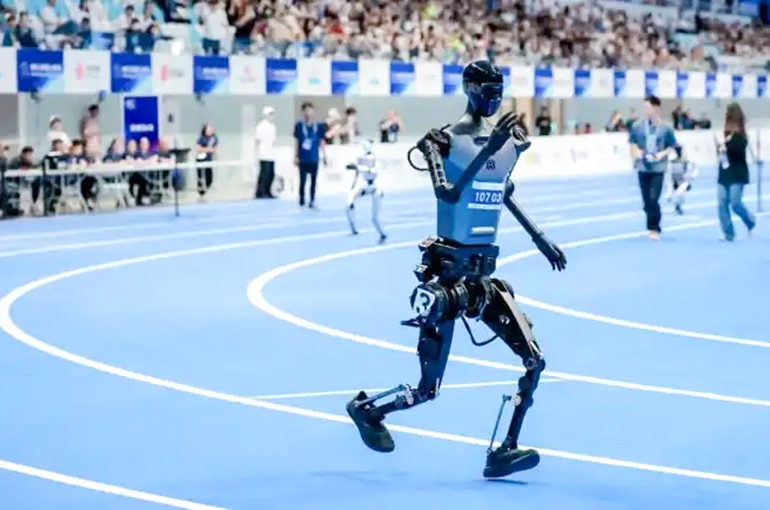 Androids Will Run Faster Than Usain Bolt Next Year, Expert Says
Androids Will Run Faster Than Usain Bolt Next Year, Expert Says(Yicai) Oct. 17 -- Humanoid robots' running speed will leap significantly next year, likely surpassing the 100-meter dash time of Jamaican sprinter and the world's fastest man Usain Bolt, according to an industry expert.
When manufacturers perform specialized optimizations for specific scenarios like running, the improvement in robots' capabilities could be rapid, Wang Chuang, president of Chinese humanoid robotics startup AgiBot's general business line, recently told Yicai. "At next year's World Humanoid Robot Games, we will see robots run faster than Bolt."
Bolt, an eight-time Olympic gold medalist, set the 100-meter world record of 9.58 seconds at the World Athletics Championships in Berlin in 2009. In comparison, Beijing Humanoid Robot Innovation Centers' Tiangong Ultra holds the record for androids, running the distance in 21.50 seconds at the World Humanoid Robot Games this August.
Developers are enthusiastic about humanoid robots running competitions because they serve as a comprehensive performance trial, thoroughly testing hardware and software capabilities, several industry experts said to Yicai.
Regarding hardware, running can test whether robots' parts, such as motors and joints, can provide the explosive power and endurance needed for high-intensity sprints and their heat dissipation efficiency under high load, the experts noted. On the software side, androids' ability to perceive the environment in real-time and dynamically adjust to maintain balance at high speeds is being challenged, they added.
Robots participating in the latest World Humanoid Robot Games required remote controllers issuing forward, backward, left, and right commands to guide them through obstacles and help them complete the 100-meter race, while algorithms handled their full-body motion.
Robot research and development used to focus on dexterous hands and large models, but leg control is gaining more and more attention, the experts pointed out.
Running and walking are the foundation for robots to move toward practical application, noted the Beijing Humanoid Robot Innovation Center, adding that stable locomotion is the key for androids to enter daily life and perform tasks autonomously.
To maintain dynamic balance, the control system must constantly fine-tune the force of each joint, according to the center. Multiple joint motors in the legs need to be continuously powered to generate torque that counteracts gravity, maintaining the robot's upright posture and preventing it from falling, it pointed out.
Editor: Martin Kadiev